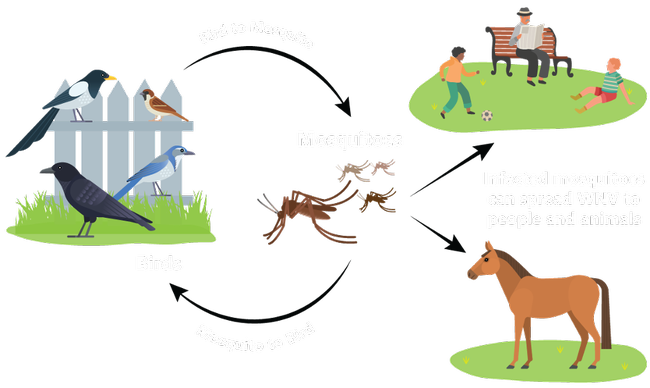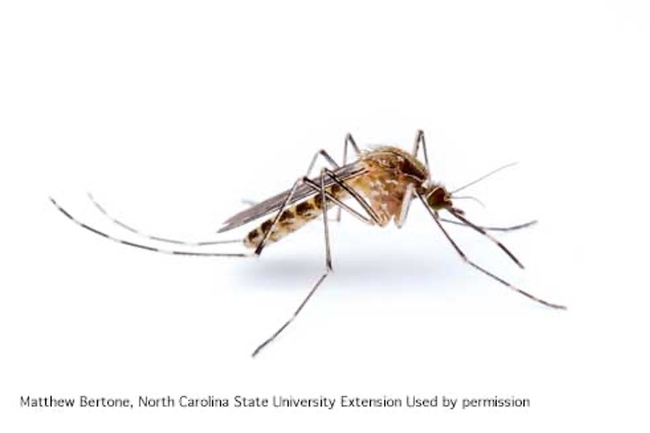The invasive pest spotlight focuses on emerging or potential invasive pests in California. In this issue we are covering West Nile virus.
West Nile Virus Facts

West Nile virus disease was first reported in California in 2003 and has become the most common and serious vector-borne disease in California. With the exceptionally wet weather in 2023, reported cases of this mosquito-borne virus doubled compared to the previous year.
West Nile virus is spread by mosquitoes in the genus Culex. Usually, the virus passes between mosquitoes and birds, but mosquitoes can also transmit the virus to humans, horses, and other domestic animals.
Because mosquitoes can get the virus from birds, monitoring bird populations and recording dead birds is one of the most important ways to track this disease.
What can you do?
The best way to prevent the spread of West Nile virus is to reduce mosquito populations through controlling the mosquito larval stages. Whenever possible, standing water should be drained, since mosquito larva can grow in as little as a few ounces of water. Clean gutters and storm drains to ensure water does not collect there. In areas that cannot be drained or mosquito-proofed, such as ponds, neglected pools, or unsealed rain barrels, there are some biocontrol options like Bacillus thuringiensis (Bt) that can reduce mosquito populations. In addition to these preventative measures, protect yourself from adult mosquito bites by using mosquito repellents or wearing long-sleeved shirts and long pants.
For more information on mosquito control and protecting yourself from mosquito-borne diseases, visit the UC IPM pages on mosquitoes. To report dead birds and view more information on West Nile in California, visit Westnile.ca.gov.
[Originally featured in the Spring 2024 edition of the Home & Garden Pest Newsletter]
